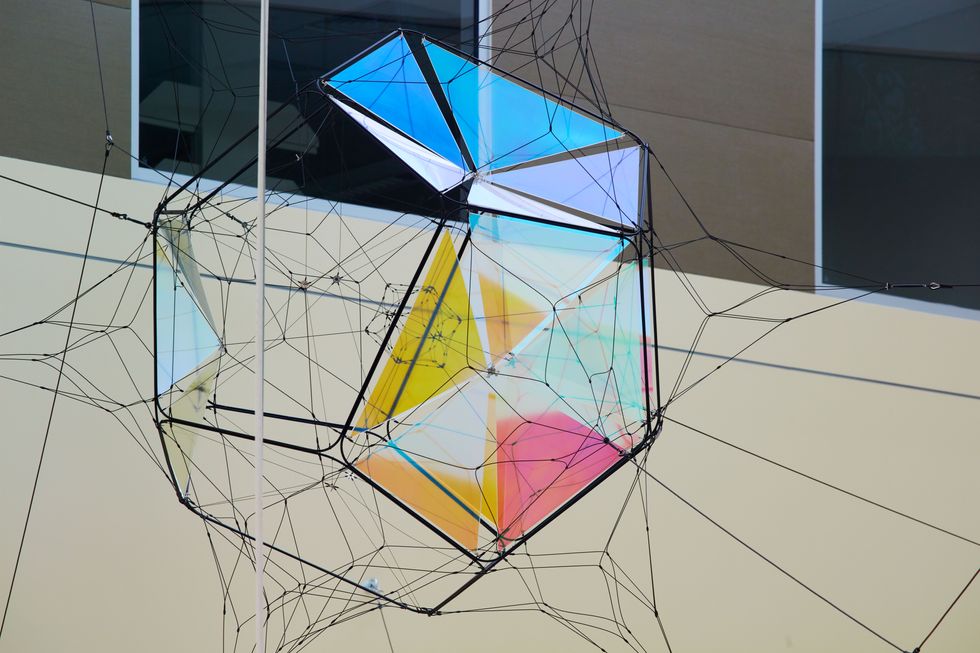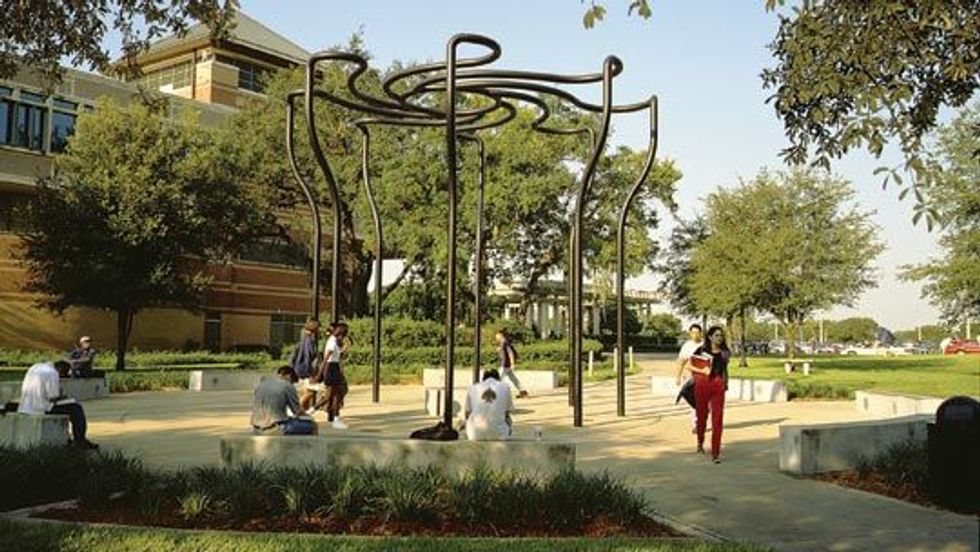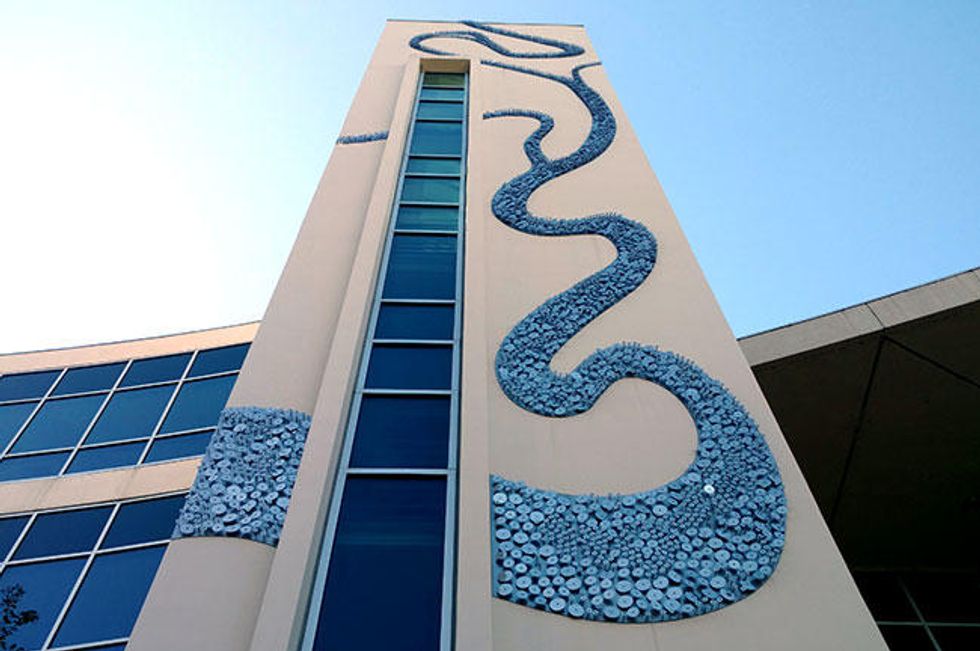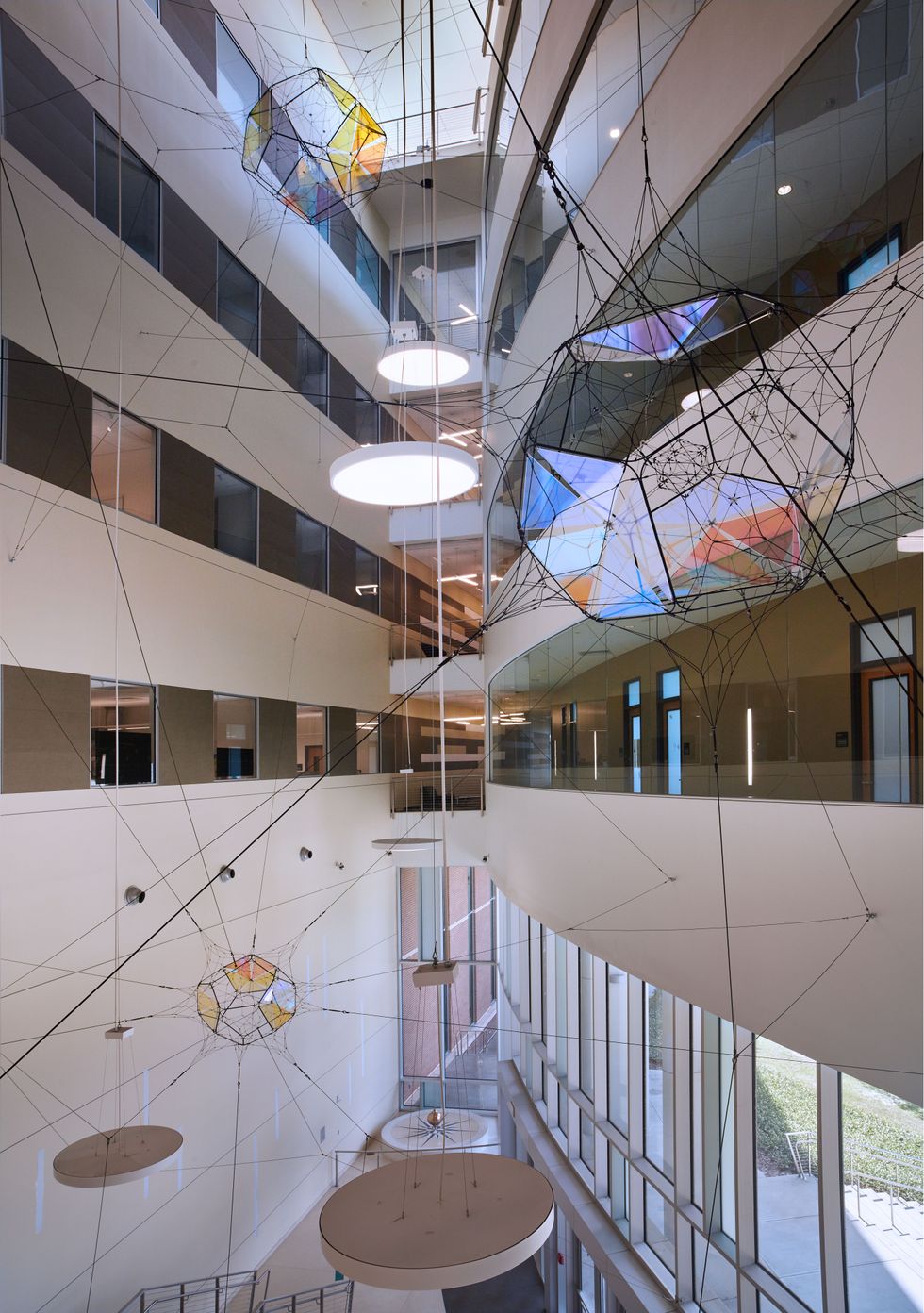We’re studying in a museum. That’s right, over thirty art installations canvas the USF campus, and most of us don’t even know about it.
Did you know that 5% of the budget for the construction of every state building in Florida is required to go to public art in or around the building?
Well, the majority of students and staff don’t know that. In fact, many employees aren’t even aware of the public art in the very building they work in.
As a student, I guarantee you’ve seen these pieces, maybe even thought “Wow, how nice for USF to make our buildings look pretty.” But did you really think about the process of installing those pieces and what goes into each new project?
Solar Rotary
Created by artist Nancy Holt, Solar Rotary is located behind Cooper Hall and next to the CIS building, home of Zimmerman School of Advertising & Communications. Many people like to sit and snapchat by the work, but little know its history.
The USF Institute for Research in Art describes it as the following:
“At solar noon on the day of summer solstice, Solar Rotary's shadow caster casts a circle of light around the central seat. On five specific days of the year, at times specific for each day, Solar Rotary casts its circle of light around plaques placed in the ground plane of the plaza that mark historic events for the State of Florida and the city of Tampa. Additional seating is provided both around the perimeter of the plaza, and on four benches set into the nearby landscape marking the cardinal directions, North, South, East and West.”
Read more about Solar Rotary here.
Tampa Wind
A vision brought to life by environmental artist Stacy Levy, Tampa Wind is located on the side of the side of the Environmental Sciences Building.
The USF Institute for Research in Art describes it as the following:
“Stacy Levy’s, Tampa Wind, is a wind-activated rendering of a section of the Hillsborough River as it passes through the eastern edge the USF Tampa Campus. Fabricated in stainless steel, Tampa Wind reflects the changing light and environmental conditions specific to the site. The Levy commission is mounted on the exterior stair tower wall running the full height of the four-story Natural and Environmental Sciences facility. There are over 2000 stainless discs ranging in size from one and half inches to four inches, attached to individual posts that emerge from a stainless plate cut to render the topography of the river. The slightest breeze causes the discs to move creating an ever-changing field of reflected light that can be seen thousands of yards away from the site. The effect is not unlike the play between wind and light on water, reminding the viewer of the source of Levy’s imagery and the nature of the natural environment.”
Read more about Tampa Wind here.
Caelum Dust
An awe-inspiring installation by Tomás Saraceno, this multi-level piece can be found throughout the tall ceiling space in the Interdisciplinary Sciences building.
The USF Institute for Research in Art describes it as the following:
“Caelum Dust (2016) is comprised of three network modules, of varying scale, that span the atrium creating a complex and dynamic dialogue within the architectural space. Forming an artistic pattern of interconnectedness and a bridge between disciplines, the sculptural modules may resemble nucleuses, neuron networks, spider web formations, nebulous structures or asterisms set in the firmament. Saraceno’s on-going research of spiders and their webs serve as a structural metaphor to describe how matter is dispersed in the Universe, forming interwoven filaments of galaxies, stars and planets, or the cosmic web. The installation casts kaleidoscopic reflections through iridescent dichroic panels that change color as the viewer moves through the space. The evolving transformation of perceiving the artwork makes the aesthetic experience a synesthetic moment, during which one discovers the gamut and boundaries of our sensoria and perception.
Trained as both an architect and a visual artist, Saraceno works in the crossroad of art, physics, biology, astronomy and engineering, and explores ideals of human interconnectivity and new, sustainable ways to inhabit and sense the environment. In 2015, he achieved the world record for the first and longest certified fully-solar manned flight. During the past decade, he has taken up collaborations with renowned scientific institutions, including the Massachusetts Institute of Technology, Max Planck Institute, the Nanyang Technological University of Singapore, and the Natural History Museum London.
Saraceno was born in Argentina and currently lives and works in Berlin and beyond the planet Earth. He has held residencies at Centre National d’Études Spatiales (2014–2015), MIT Center for Art, Science & Technology (2012–ongoing) and Atelier Calder (2010), among others. In 2009, Saraceno attended the International Space Studies Program at NASA Ames. The same year he presented a major installation at the 53rd Venice Biennale, and was later awarded the prestigious Calder Prize. His work has been widely exhibited internationally in both solo and group exhibitions. Saraceno’s work is included in the collections of The Museum of Modern Art, New York; SFMOMA, San Francisco; Walker Art Center, Minneapolis; Nationalgalerie, Staatliche Museen zu Berlin, Berlin; among others.”
Read more and see a time-lapse of the installation of Caelum Dust here: here.
USF is home to many more magnificent pieces of artwork, many of them done by famous artists. As students, it’s our responsibility to grow into culturally aware people, and here’s one of the easiest ways to do that: simply look at and learn about the environment around you.



















